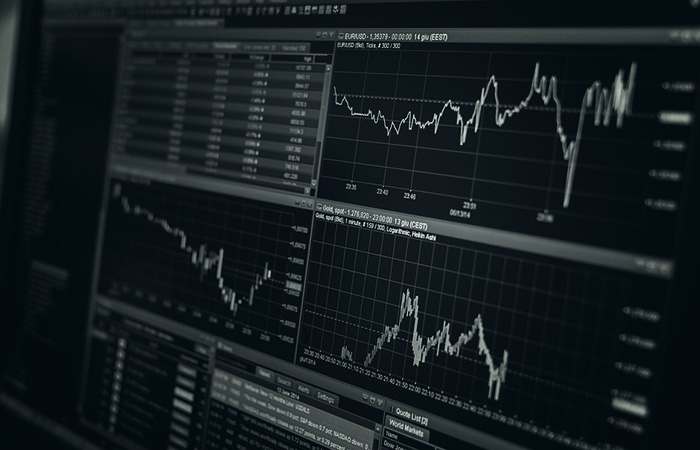Gold and Silver Futures Contracts 101
Understanding how gold futures work will make you a smarter investor. The futures market embodies important concepts such as supply and demand, leverage, and free markets.
Some investors also use gold futures as financial instruments to gain exposure to the gold market or silver market. Later we will discuss why this is a highly leveraged —and risky!—strategy.
What Are Silver and Gold Futures Contracts?
Futures trading plays an important role in determining gold and silver prices. So what are they?
Futures contracts are legal agreements between two parties (buyer and seller) to buy a particular asset at a future date. Up until that expiration date arrives, the contracts can be freely traded like any other security. For this reason they are often called gold continuous contracts.

Futures contracts are agreements made between two parties.
As the name "futures" implies, the contracts are settled at a future date—usually a few months away. This is distinct from the gold spot price, which is the current price at any given time. Upon expiration, the contract holder can either roll over their position, take cash settlement, or (in rare cases) take physical delivery of their metals.
The size of futures contracts is a bulk amount of precious metal. Contract sizes on COMEX, the CME Group's commodities exchange in the United States, are for 100 troy ounces of gold and 5,000 troy oz for silver. According to contract specifications, the gold must be at least 99.5% pure (.995 fine) and the 5,000 ounces of silver bullion must be at least .999 fine.

Futures trading brings together buyers (long) and sellers (short).
The price of futures contracts are always fluctuating as they are traded on exchanges like COMEX. This is similar to how stock quotes or stock prices behave throughout the trading day. The exchanges also offer contracts that go father out into the calendar later in the year, though these contracts tend to be less active than the current month or closest month.
Gold Futures and Silver Futures Are Very Similar
It should be noted that all of the information in this article will apply equally to silver futures contracts. Both silver and gold futures function in the same manner. The only real difference is the type of metal and the contract specifications for weight and purity mentioned above.
Aside from that, every detail about gold futures provided here will also hold true for silver futures. Whether you trade gold or are trading silver, you can apply the information interchangeably for each metal. Trading of both metals is overseen by organizations such as the London Bullion Market Association (LBMA) or CME Group.
Large Institutions Use Gold Futures to Hedge
Futures were originally created in order for producers of a given commodity to hedge against falling prices. They served as a way to lock in future prices. This was especially useful for farmers selling agricultural crops.
The same concept applies to the precious metals. Like with other commodities, mining companies that produce gold will sell futures as a hedging mechanism. It helps reduce their exposure to risk.

An underground gold mine.
Aside from mining companies, large institutions like hedge funds, the trading desks at big banks, and even bullion brokers also use the futures market to hedge their positions.
Some futures trading activity, however, is done by speculators. These are traders who seek to make a profit by predicting which direction prices will move. Rather than being involved in the markets hands-on, they may rely merely on technical analysis charts, how gold has historically performed, trends in the rate of change in prices, or other strategies.
Although speculators aren't necessarily interested in buying or owning physical gold, they still serve two important purposes. First, they take the other side of the trade against hedgers. Second, they contribute to price discovery and the narrowing of buy-sell spreads through arbitrage.
Futures Trading Determines Today's Gold Prices
Together, all of the buyers and sellers of futures contribute to the process known as price discovery. This was once done through an open outcry, when floor traders would literally shout their buy or sell orders. Today, this largely takes place digitally.
Price discovery is a market mechanism for processing the best available information about an asset at any given moment. It mainly comes down to supply and demand. Futures prices are determined once supply and demand reach equilibrium. (Gold futures quotes are usually expressed in U.S. dollars.)
Here is how futures markets generally work: If there are more buyers than sellers, then prices go up. If there are more sellers than buyers, then prices go down. A litany of different factors can affect this dynamic between supply and demand, such as interest rates, but that's the gist of it.
Other indicators like open interest—the net amount of open contracts on a futures exchange, for the gold COMEX contract, for example—provide useful financial information to market participants. Relevant news and technical analysis are also factored in. The exchanges themselves are marketplaces for processing data that lead to equilibrium prices.
The gold futures market is also highly liquid. This means that there is a deep pool of buyers and sellers, so orders (to buy or to sell) are filled quickly and close to the prevailing market price. The high liquidity goes hand-in-hand with fairly high trading volumes.

Price charts are the most common way of tracking market activity.
Significant Risks of Trading Gold Futures
There is considerable risk that comes with trading futures contracts. One potential pitfall is the high amount of leverage involved.
Leverage amounts to taking a position in the market that is much larger than a trader's initial capital. Futures trading allows an investor to greatly amplify their gains—or losses. This means one major loss caused by the market moving against you could wipe out your entire investment account. This is particularly true during a period of low average volume for trades.
Futures are derivative financial products. In other words, they are financial instruments rather than assets. Gold futures trading falls more under the category of "paper gold" similar to a gold ETF (gold exchange-traded-fund) such as the SPDR Gold Shares (GLD) rather than a physical market.
ETFs share similarities with holding an index fund that "synthetically" tracks the performance of the Dow Jones, S&P 500, or Nasdaq—except it tracks the price of gold, silver, or another commodity like crude oil.
It's rare that someone holding a gold futures contract to expiry will take delivery of their metals. The process is difficult, costly for storage, and in some cases impossible depending on the broker. If your end goal is to own physical gold, then futures are not the best option.
Trading futures is also riskier than owning mining stocks. Unlike with gold and silver stocks, very few investors "buy-and-hold" gold futures. To use the strategy, you would need to constantly roll over a futures contract at expiration (before the delivery date).
Other Kinds of Futures Contracts
The same kind of trading strategies are used for exchange-traded contracts on other global financial markets, like the Tokyo Commodity Exchange and London Metal Exchange (LME), in addition to the New York Mercantile Exchange (NYMEX) and the aforementioned Chicago Mercantile Exchange. The seller or contract buyer agrees to exchange a specific quantity of an underlying commodity for a future delivery date. This could range from soybean oil and natural gas to live cattle and lean hogs. The settlement price is determined on the last day of trading.
The process is not so different from how the stock market or foreign exchange (forex) market works. When participants start trading (when a particular exchange's trading hours begin), price movement is determined by the balance of long positions and short positions. "Long" and "short" simply mean buyers and sellers, respectively.
For forex futures, some of the most heavily traded currencies are the U.S. dollar, euro, Australian dollar, Canadian dollar, British Pound, Japanese Yen, and Swiss Franc. Currencies are traded in pairs and always fluctuating: there are no longer fixed price quotations.
Futures come with a higher risk due to leverage, as mentioned above. This essentially allows traders to take out a line of credit to multiply their position, known as trading "on margin." In some cases, the margin requirements—how much money must be in a trader's account—are only 1/100th (or 1%) of the size of the trade. In the case of a margin call, a trader's position can be liquidated in order to cover the margin requirement if a contract value falls too low.
Get up-to-the-minute current precious metals prices from Gainesville Coins, as well as historical prices on our interactive charts:
All Precious Metals Prices and Charts - Updated in Real-Time
Live Gold Spot Price and Historical Charts
Live Silver Spot Price and Historical Charts
Live Platinum Spot Price and Historical Charts
Live Palladium Spot Price and Historical Charts

Everett Millman
Everett has been the head content writer and market analyst at Gainesville Coins since 2013. He has a background in History and is deeply interested in how gold and silver have historically fit into the financial system.
In addition to blogging, Everett's work has been featured in Reuters, CNN Business, Bloomberg Radio, TD Ameritrade Network, CoinWeek, and has been referenced by the Washington Post.
